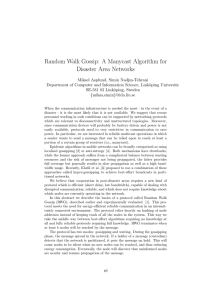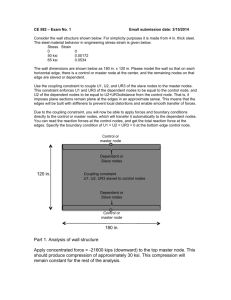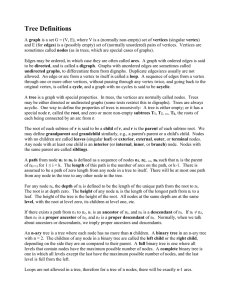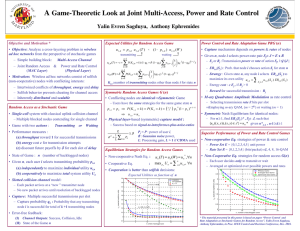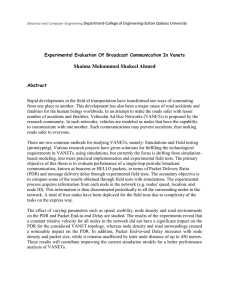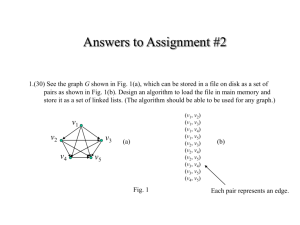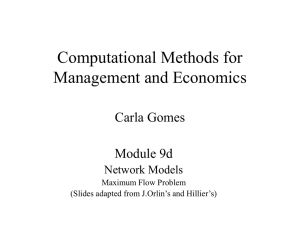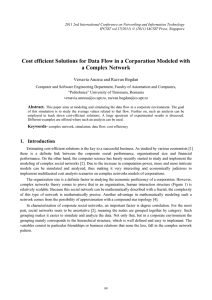ECS 289 / MAE 298, Network Theory Spring 2014 Problem Set # 1 b
advertisement
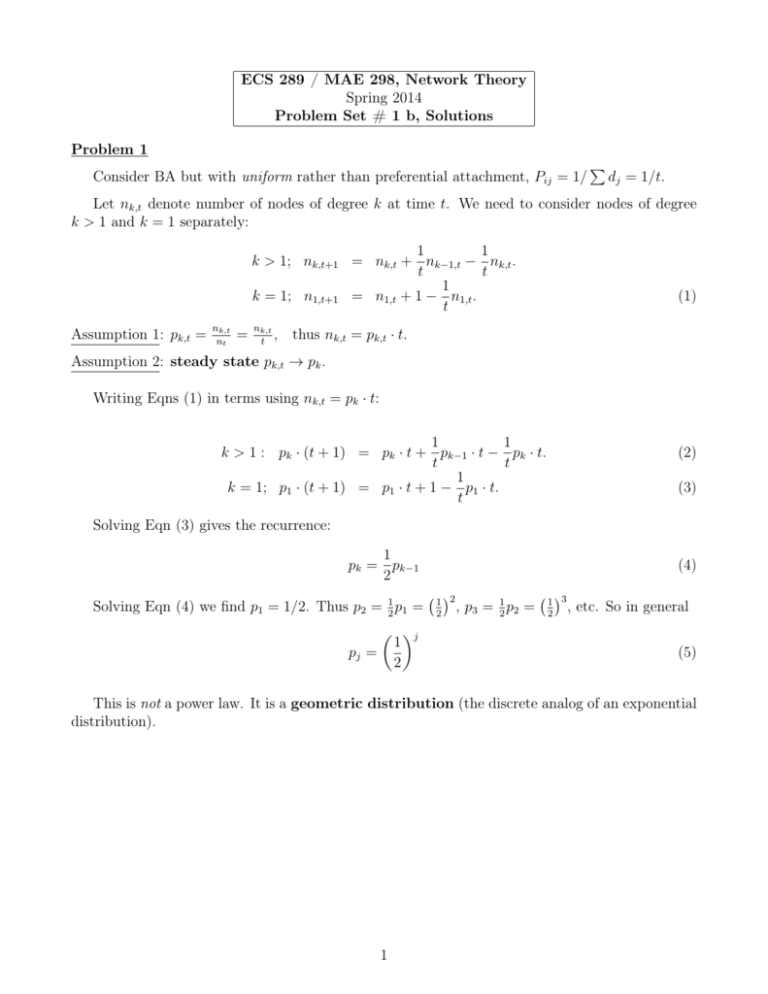
ECS 289 / MAE 298, Network Theory Spring 2014 Problem Set # 1 b, Solutions Problem 1 Consider BA but with uniform rather than preferential attachment, Pij = 1/ P dj = 1/t. Let nk,t denote number of nodes of degree k at time t. We need to consider nodes of degree k > 1 and k = 1 separately: 1 1 k > 1; nk,t+1 = nk,t + nk−1,t − nk,t . t t 1 k = 1; n1,t+1 = n1,t + 1 − n1,t . t Assumption 1: pk,t = nk,t nt = nk,t , t (1) thus nk,t = pk,t · t. Assumption 2: steady state pk,t → pk . Writing Eqns (1) in terms using nk,t = pk · t: 1 1 k > 1 : pk · (t + 1) = pk · t + pk−1 · t − pk · t. t t 1 k = 1; p1 · (t + 1) = p1 · t + 1 − p1 · t. t (2) (3) Solving Eqn (3) gives the recurrence: 1 pk = pk−1 2 Solving Eqn (4) we find p1 = 1/2. Thus p2 = 12 p1 = j 1 pj = 2 (4) 1 2 , 2 p3 = 12 p2 = 1 3 , 2 etc. So in general (5) This is not a power law. It is a geometric distribution (the discrete analog of an exponential distribution). 1 Problem 2 (a) Let probability of picking a particular node of degree ki be pki = Aki . Since this is a probability, the sum over all nodes present should sum to one. Using this we can determine the normalization constant A. X pki = 2Am = 1 ⇒ A = i 1 2m (6) ki Therefore, probability of picking a node i with degree ki is pki = 2m . Each time we add an edge we have two times we pick a node, therefore, the probability of picking a node i when an edge is added is given by kmi . (b) We would like to track the probability of finding a node of degree k as we add edges. The expected number of nodes with a given degree, k, after addition of an edge would be equal to the expected number of nodes with degree k before the edge was added, plus the expected number of nodes of degree k − 1 which would acquire an edge, minus the expected number of nodes with degree k that would acquire an edge (and would have degree k + 1 after the addition of the edge). Writing the above argument in terms of an equation, pk (m + 1) = pk (m) + k (k − 1) pk−1 (m) − pk (m) m m (7) (c) Rearranging the terms in the above equation and substituting m = nc/2, k (k − 1) pk−1 (m) − pk (m) pk (m + 1) − pk (m) = m m nc nc 2(k − 1) nc 2k nc pk + 1 − pk = pk−1 − pk . 2 2 nc 2 nc 2 Let P̃k (c) = pk (nc/2). Using the new variable, the above equation can be written as h i 2 c P̃k c + n − P̃k (c) = (k − 1)P̃k−1 (c) − k P̃k (c) . 2 (8) (9) n Taking the limit n → ∞ we get c dP̃k = (k − 1)P̃k−1 (c) − k P̃k (c) . dc (10) Since the symbol used to denote the variable is not relevant, we have c dpk = (k − 1)pk−1 − kpk . dc 2 (11)







